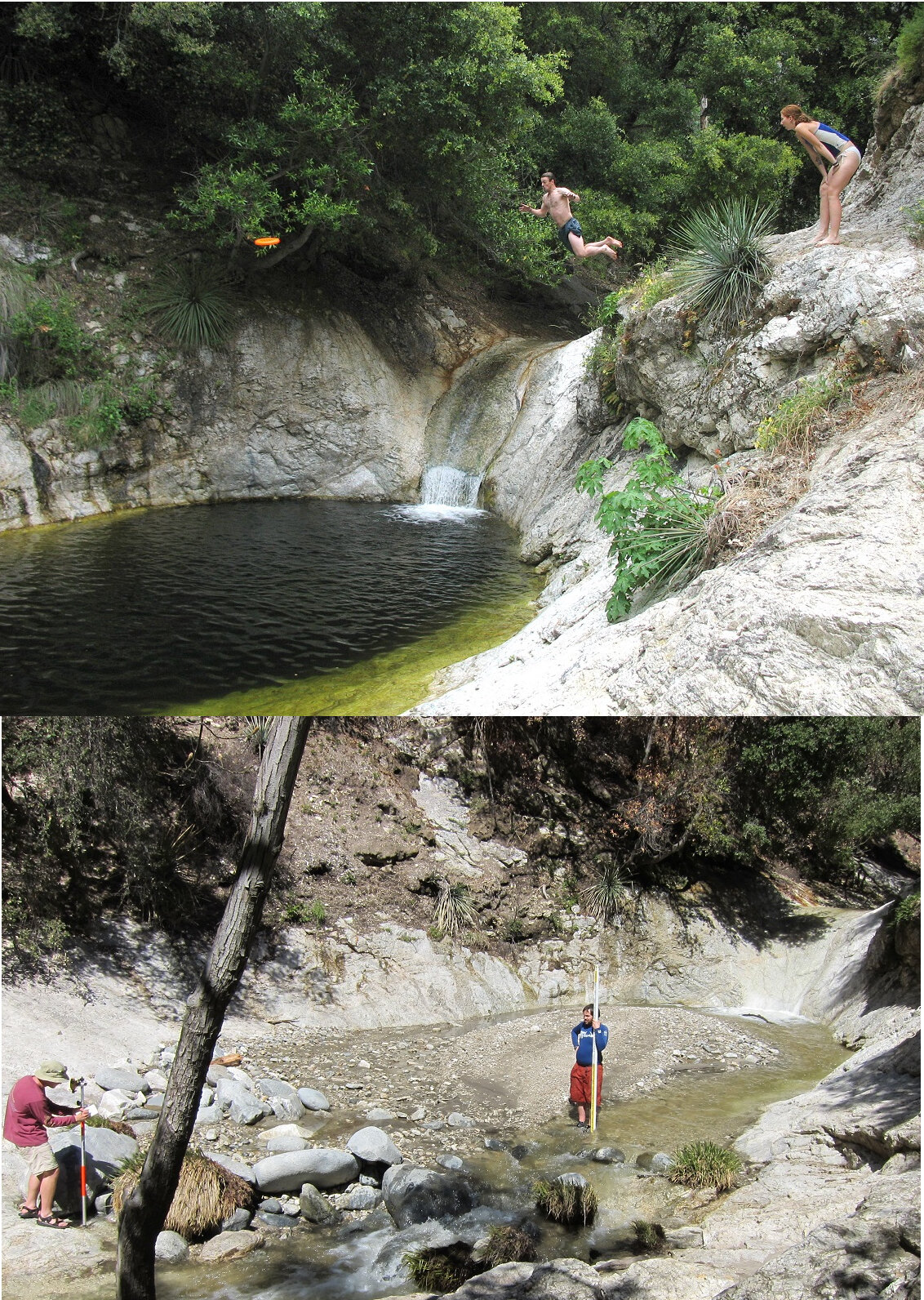
What causes pools below waterfalls to periodically fill with sediment?
Deep pools below waterfalls are popular recreational swimming spots, but sometimes they can be partially or completely filled with sediment. New research showed how and why pools at the base of waterfalls, known as plunge pools, go through natural cycles of sediment fill and evacuation.Beyond impacting your favorite swimming hole, plunge pools also serve important ecologic and geologic functions. Deep pools are refuges for fish and other aquatic animals in summer months when water temperatures in shallow rivers can reach lethal levels. Waterfalls also can liquefy sediment within the pool, potentially triggering debris flows that can damage property and threaten lives. Over geologic time, pools are importance because the energetic waterfall jet can erode the rock walls of the poolslowly moving the waterfall upstream, while simultaneously creating a deep canyon in its wake.Reporting in the journal Geology today, Joel Scheingross of the University of Nevada Reno and Michael Lamb of the California Institute of Technology provided a new theoretical framework to predict when plunge pools fill with sediment, and when they subsequently evacuate that sediment exposing the rock walls of the pool to erosion. They showed that waterfall plunge pools tend to fill with sediment during modest river floods when sediment is transported in the reach upstream of the waterfall, but the waterfall jet is too weak to move all the sediment it receives from upstream. In contrast, during large floods, a strong waterfall jet can more efficiently move sediment up and out of the pool, outpacing the delivery of sediment from upstream, and exposing bedrock to erosion.Scheingross and Lamb showed that waterfall plunge pools are most likely to fill with sediment following landscape disturbancessuch as wildfire or landslidesthat cause large influxes of sediment to rivers, or during prolonged droughts when river floods are rare. This information is useful to scientists and land managers interested in maintaining habitat and mitigating natural hazards. They also showed that bedrock erosion in plunge pools likely occurs only during large, infrequent floods, which tend to happen every 10 years or even less frequently. Therefore, the slow march of waterfalls upstream over geologic time likely occurs by fits and starts at a cadence set by extreme flood events.More information:Joel S. Scheingross et al, Mass balance controls on sediment scour and bedrock erosion in waterfall plunge pools, Geology (2021). DOI: 10.1130/G48881.1Citation: What causes pools below waterfalls to periodically fill with sediment? (2021, May 19) retrieved 19 May 2021 from https://phys.org/news/2021-05-pools-waterfalls-periodically-sediment.htmlThis document is subject to copyright. Apart from any fair dealing for the purpose of private study or research, no part may be reproduced without the written permission. The content is provided for information purposes only.
……Other
Comments
Leave a comment in Nestia App